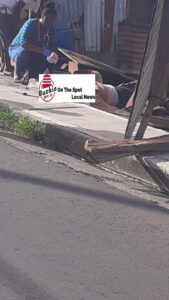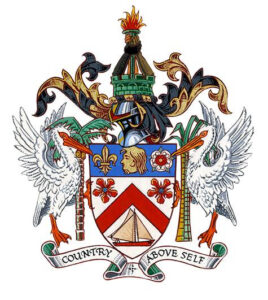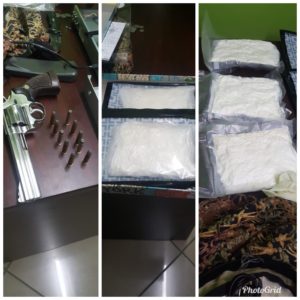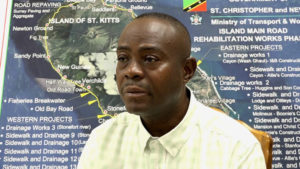Published 2 May 2024
Basseterre, Buckie Got It Media Source
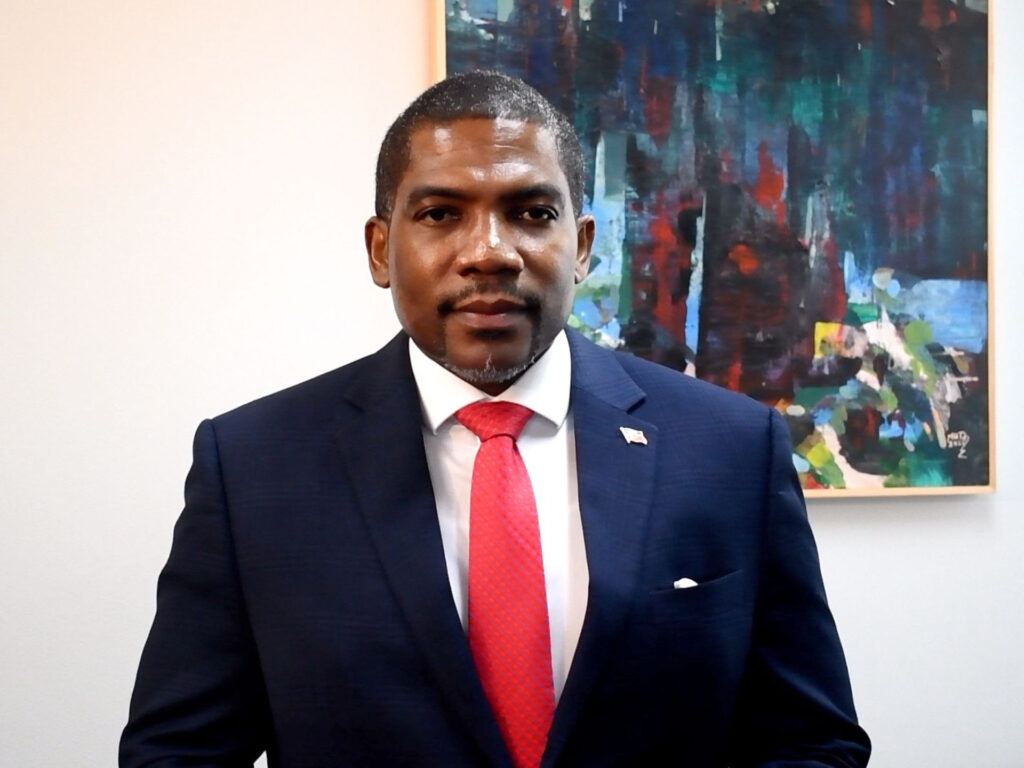
“Addressing Gang Violence and Illicit Firearms Access in the Small Island and Low-Lying Coastal Developing States of the Caribbean.”
Meeting To Discuss the Special Security Concerns Of The Small Island And Low-Lying Coastal Developing States Of The Caribbean
Excellencies, Permanent Representatives of Member States
Distinguished Permanent Observers
Chair and Vice Chairs of the Committee on Hemispheric Security with particular mention of Colonel Julius Skeete of the Cooperative Republic of Guyana
Distinguished OAS Secretary General Luis Almagro and Assistant Secretary General Nestor Mendez
Esteemed experts of CARICOM and the broader hemisphere whose insight will frame today’s important meeting
Mr. Steven Griner and OAS personnel at the center of this important battle
Esteemed delegates, distinguished guests, ladies, and gentlemen
As the Chairman of the Council of Ministers of National Security and Law Enforcement (CONSLE) of the Caribbean Community, it is my important duty to address you today on a theme that is critical not only to the member states of CARICOM, but to every Member State that recognizes the value of peace and security to our shared vision for fortifying the Americas security, democracy, development, and human rights. Today, we focus on the Special Security Concerns of the Small Island and Low-lying Coastal Developing States of the Caribbean, which are many, which are daunting, which are real. Our success at addressing them will make our region and all of the Americas a safer space in which our people can thrive in peace.
The persistent issue of crime and security continues to loom large in the global community and CARICOM member states are no exception. Today’s forum serves as a stark reminder of the urgent need to address the pressing challenges of Gang Violence and Illicit Firearms Access, particularly in our Small Island and Low-Lying Coastal Developing States of the Caribbean region.
I commend the organizers for convening this forum, which highlights the vital importance of collaboration and partnership in tackling the longstanding challenges of gang violence and illicit firearms access. Crime, especially gang-related violence, continues to evolve and grow increasingly complex in our Region, necessitating innovative and holistic approaches to effectively combat it.
Excellencies;
Our contemporary geopolitical landscape is characterized by unprecedented global interdependence and the proliferation of new technological tools, underpinned by the ubiquity of social media platforms. This phenomenal interconnectedness underscores the reality that events in one corner of the world can have far-reaching repercussions across the hemisphere, impacting regions and nations far removed from the origin of the event. In this context, the traditional boundaries between domestic and international security blur, compelling governments and policymakers to understand new dimensions, risks, and threats, and adopt a nuanced approach to security risks and threats at the national, regional, hemispheric, and global levels.
Therefore, as governments and policymakers, it is critically important that we possess a clear understanding of the security risks and threats facing the regions, the hemisphere, the global community, and their implications for our nations and peoples. By extension, it is equally essential that governments and policymakers understand the distinct characteristics of different Regions and sub-regions within the hemisphere.
As the Chair of CONSLE, I use the term ‘CARICOM’ rather than ‘Latin America and the Caribbean’, to demonstrate the uniqueness of different regions within the hemisphere – which may require different policy prescriptions to address the same threat which may be perpetrated using different modalities.
In varying global reports, the Caribbean and Latin America are treated as a geostrategic whole. It is important that governments and policymakers not only conceptualize the hemisphere as a whole but understand the unique characteristics and vulnerabilities of regions that comprise the hemisphere.
Despite facing shared challenges such as gang violence and illicit firearms access, CARICOM represents a unique entity with its own set of vulnerabilities and complexities, distinct from those of other sub-regions in the hemisphere. CARICOM security interests must be understood within the context of the special peculiarities of Small Island and Low-Lying Coastal Developing States in the Caribbean.
To a large extent, due to their small size, member States of CARICOM have inherent challenges with respect to sustainable security policy, which include: limited institutional and human capacity; extensive and open maritime frontiers; limited prospects for trade and economic diversification; significant susceptibility to external shocks such as natural disasters; the general perils of transnational organized crime; and reliance on a narrow range of security instruments for policy making and implementation. Collectively, these characteristics confer a high degree of vulnerability upon Small Island Developing States (SIDS) of CARICOM and serve to heighten the difficulties they face in pursuing their security interests.
The fifteen (15) Member States that comprise CARICOM have a total population of over 18 million. The populations of these countries range generally from over 48,000 (St. Kitts and Nevis) to Haiti with over 11 million persons and Jamaica with just under 2.8 million.
It is important to reiterate and emphasize that “Smallness” contributes to a state’s security challenges and impacts its policy response. While international norms and cooperation help Small Island and Low-Lying Coastal Developing States of the Caribbean cope with their security challenges, they do not remove this inherent structural reality.
Therefore, the vulnerabilities and special circumstances of SIDS must be taken into account in their interactions with the international system and hemispheric security.
CARICOM SIDS are further confronted with the challenge of asserting their security concerns on the hemispheric and international agenda. With limited resources, conducting effective security policy negotiations and advancing their strategic interests pose unique difficulties for the CARICOM States.
In the plethora of international security challenges that inevitably draw the attention and involvement of the major powers, the problems of CARICOM and SIDS are sometimes perceived as minuscule. Persistent global conflicts can distract the United Nations and the Region’s traditional partners from devoting both attention and resources to the persistent serious problems of crime and violence in CARICOM.
The problems of SIDS and the associated threats of gang violence are too often perceived as minor in international security fora. This is partly due to scale, the non-traditional nature of the threats they face, prioritization of other global threats, including State conflicts and Weapons of Mass Destruction, and because these threats are often not seen as state armed conflict.
Excellencies;
The Member States of CARICOM are all affected – to varying degrees – by gang violence and illicit firearms access and the negative impact it unleashes on citizens’ lives and livelihoods, as well as their socioeconomic development. SIDS are more susceptible to disruption by criminal gangs, syndicates than larger and more developed economies. Given their small size and limited capacities, such States face major challenges, in particular, reduced capacity to confront and mount effective national and regional responses to counter violent criminal gangs and stem access to illicit firearms. This also includes effectively patrolling the Caribbean’s expansive maritime borders. These challenges can disproportionately affect national and regional security and ultimately impact the maintenance of peace and security.
I am therefore pleased that the participating member states at this forum consist of representatives from all jurisdictions. I will, therefore, not shirk my responsibility as a CARICOM Head to posit that this speaks to how fundamentally this justifies and underscores the necessity of building synergies and partnerships in addressing the challenges with which we are confronted as Small Island and Low-Lying Coastal Developing States of the Caribbean.
The increased incidences of violent crimes, notably shootings, and homicides, with a large majority linked to gang violence, have created much unease for the communities of the small island states with security forces that are ill-equipped, for the most part, to deal with the issue of gang-related crimes. Illegal guns account for over eighty percent of homicides in some CARICOM Member States. The Caribbean Firearms Study documented that the average medical expenditure required to treat a single firearm injury was equivalent to between 2 and 11 times the annual per capita public health expenditure in the three countries that were a part of the study (Bahamas, Barbados, and Jamaica).
We are therefore cognizant of the fact that we cannot address the issue of gang violence in isolation without considering illicit trafficking in drugs and firearms. The profound negative impact and consequences of the illegal gun trade go far beyond the high levels of homicide. Illegal guns play a key role in all aspects of trafficking, not just as a trafficked commodity but as a means of facilitating the trafficking of other commodities and as a tool to support criminal and deviant behaviour such as robberies, rape, and other forms of sexual and non-sexual violence.
Of grave concern is the significant increase in the number of high-powered weapons and ammunition that have made their way into the Region and while significant measures have been and continue to be put in place, the criminals always appear to be a step ahead. For example, while we are all catching up on the tracing of firearms, criminals are now proficiently utilizing 3D printers and creating Privately Made Firearms which are now untraceable.
Currently, as I speak, there is extensive training for Law Enforcement in St. Kitts and Nevis with CARICOM IMPACS jointly with Alcohol, Tobacco, Firearms and Explosives (ATF), Homeland Security Investigations (HSI), Customs and Border Protection (CBP) and Bureau of Industry and Security (BIS). The training has focused on the threats as well as the available tools to counter the illicit trafficking of firearms in St. Kitts and Nevis and the Region.
The creation of the CARICOM Crime Gun Intelligence Unit (a unit within IMPACS) has yielded some successes already in its ten (10) months of existence and that is mostly due to all the Agencies I have just mentioned coming together, sharing information, and working together for the betterment of all.
Recently, my colleague Heads of Government and I have been having robust discussions on the use of the Caribbean music industry by gangs and the extremely violent messages and rhetoric which is being propagated to our youth. The music often tells the stories of the intent to kill rivals or persons who may have squealed and too often the messages foretell the actual events.
Most recently some of the most notorious of these gang members have put out public videos expressing their camaraderie and offering financial support to the gangs in Haiti. Their modus operandi has shown us that what they speak or sing about in public is often ongoing or will happen in the near future. We now need to focus on the proliferation of gangs in the Region, the causes, and their inter-connectedness.
In CARICOM, there is unanimous consensus amongst States that combating gang violence and illicit firearms access requires common action. It is also clear that no one strategy will give rise to the desired outcome. In fact, experts have recommended a multi-pronged approach that allows for creating that delicate balance between prevention, intervention, and suppression, that is using the judicial process to arrest, prosecute, and control the spread of the gang culture. This requires quick action. However, the slow court process makes this a challenge for most Caribbean countries. Evidence has proven that the prevention approach has borne fruits as far as the impact on gang-related crime reduction is concerned.
Last year, in April, at the CARICOM symposium on violence held under the theme “Violence as a Public Health Issue: The Crime Challenge”, held in Trinidad and Tobago, CARICOM Heads of Government agreed on a declaration that incorporates a public health approach to crime and violence.
So, what is the significance of this in practice? This means that the solutions to gun violence require a shift in our collective perspective. Growing research proves that the most effective way to tackle gun violence is to not regard the issue of gun control purely as a law enforcement issue, but rather as a public health issue. In its basic form, the public health model requires intervention in as many places as possible. This requires a multi-sectoral approach as there are many solutions and many areas of intervention.
The strength of a public health approach is its emphasis on evidence-informed and data-driven solutions. Therefore, allow me to take this opportunity to commend CARICOM IMPACS for their publication of the CARICOM firearms study, which has provided significant insights into the issues of gun crimes in the Region, including its medical cost. We perhaps need a similar type of study to understand the Region’s proliferation of gangs.
CARICOM has demonstrated its readiness to share responsibility for hemispheric security and reaffirms its commitment to constructing a safe and secure hemisphere that enables the achievement of sustainable development goals. CARICOM’s commitment and investment are demonstrated in the decisions of the Twenty-Sixth meeting of the Conference of Heads of Government, held in Saint Lucia in July 2005, where it was agreed to establish a Regional Framework for the Management of Crime and Security in CARICOM.
Central to this framework is the CARICOM Implementation Agency for Crime and Security (IMPACS), which has primary responsibility for implementing the regional crime and security agenda. IMPACS plays a pioneering and indispensable role in coordinating and harmonizing regional security activities. Its efforts have been instrumental in supporting states in reducing gang violence and the proliferation of illicit arms.
Excellencies;
CARICOM Member States are firmly committed to addressing Gang Violence and Illicit Trafficking of Firearms and other contraband. We are hopeful this meeting today will give further impetus to our efforts to address these threats collectively.
At this juncture, I commend the partnership that has been forged between the United States and its partners and the Caribbean member states under the Caribbean Basin Security Initiative. It has formalized the mechanisms and strengthened resources in support of attempts of the security agencies of the member states in addressing the illicit trafficking in firearms that fuel instances of gang violence. The work of the OAS Secretariat must also be commended for its involvement in understanding the security challenges faced by its member states. In fact, the convening of this forum underscores the critical role that it can play in forging the partnership framework required at the hemispheric level in addressing gang violence and illicit trafficking in firearms.
In conclusion, I underscore four key messages as it relates to the issue of gangs and access to firearms:
Partnership and cooperation are not just important, they should be the very bedrock of our strategy to overcome our shared challenges. Only through our collective efforts can we effectively address the complex security landscape we face.
Greater effort should be placed on identifying individuals at risk. Early interventions with high-risk individuals are a proven strategy.
We cannot fight gang violence and illicit firearms access on just one front. We must understand and address the root causes.
Let us be reminded that those who are closest to the problem are also critical to solving it. Communities are essential partners, an asset, and a source of resources and ideas. Let us ensure that they are critical actors in our collective efforts.
CARICOM and its Member states will continue to work to ensure that Latin America and the Caribbean remain a Zone of Peace.
I congratulate to the organizers of this special meeting, and by extending my best wishes to the deliberations that will follow my remarks. Your work is a pivotal supplement to the many efforts at play in making our region a safer, more equitable, more harmonious zone of peace, in which the people of the Americas can prosper and realize their fullest potential.
Thank You.



